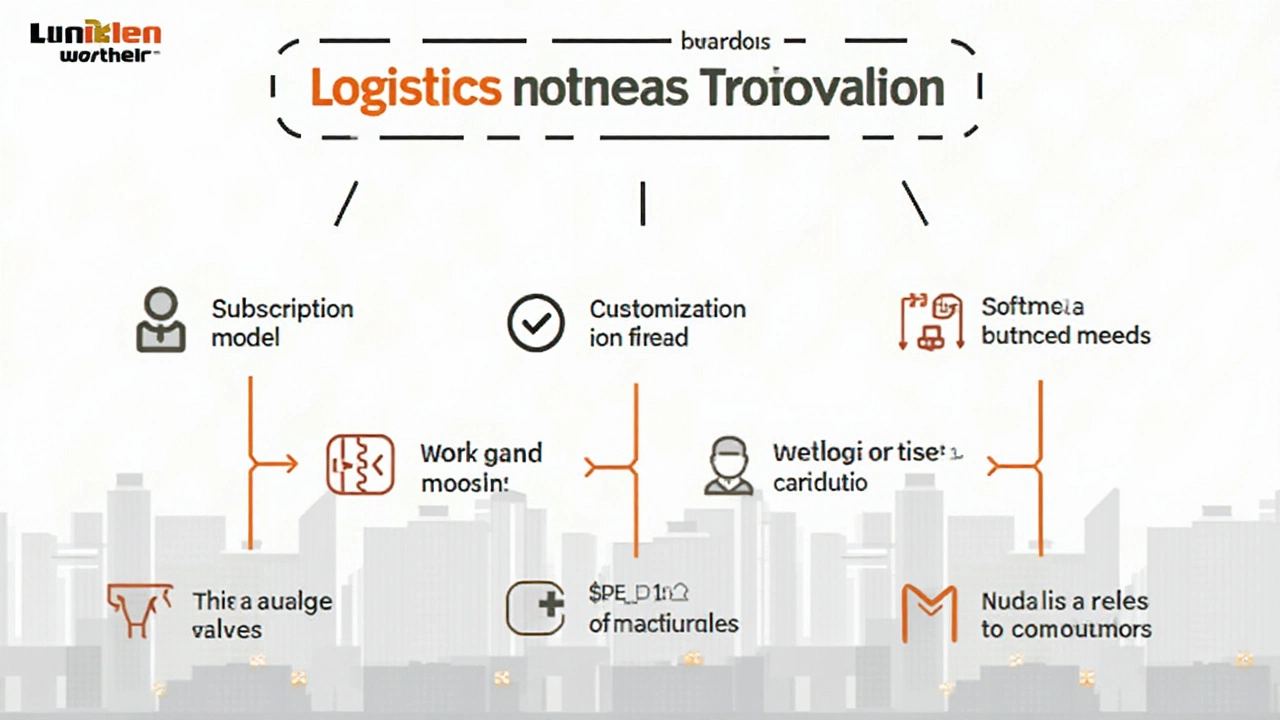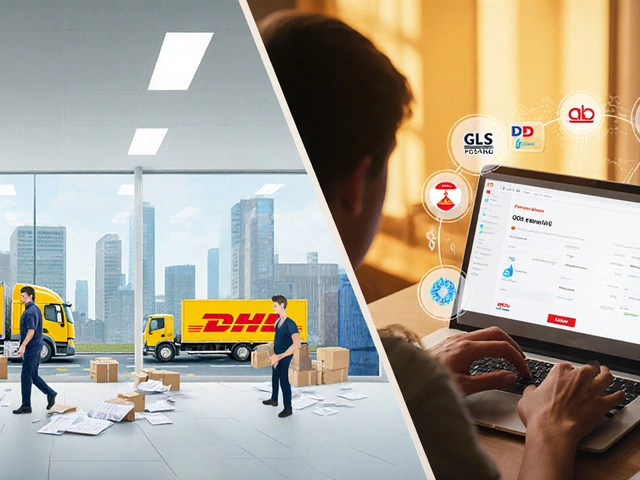The world of logistics is rapidly evolving with digital solutions at its core, helping businesses streamline operations and enhance efficiency. But with the introduction of logistics software comes the inevitable question: How much is it going to cost?
There isn't a one-size-fits-all answer, as the pricing varies based on several factors. The type of software, its capabilities, the level of customization, and even the chosen subscription model all play significant roles in determining the final bill.
Our exploration today takes a closer look at these core factors. We'll dive into the different cost components, aiding businesses in navigating budgeting decisions and understanding the value they receive for their investment.
- Key Cost Factors in Logistics Software
- Subscription Models and Pricing
- Customization and Integration Costs
- Market Trends Influencing Software Pricing
Key Cost Factors in Logistics Software
The cost of logistics software is often more complex than the price tag of a standalone application. It's tied to a series of factors that shape not just immediate expenses, but also the long-term value a company extracts from the solution. First and foremost, what kind of logistics software are we talking about? It could be a Transport Management System (TMS), a Warehouse Management System (WMS), or even an end-to-end Supply Chain Management (SCM) suite. Each has its unique functionalities and costs associated with those capabilities. Typically, the more comprehensive the system, the higher the initial price point, reflecting its ability to handle multiple facets of logistics.
Licensing and subscription models are crucial in determining costs. Some vendors offer on-premises licenses, where you're buying the software outright, while others present a subscription model, often referred to as Software-as-a-Service (SaaS). The latter usually involves monthly or annual fees and may appear cheaper upfront, but over time, costs can add up. It's important for businesses to assess their cash flow and choose a model that aligns with their financial strategy. Tailoring the software to specific business needs can also affect costs significantly. Customization allows companies to modify software to fit their particular processes, but this often requires additional development resources, translating into higher expenses.
Integration with existing systems is another factor that can influence the pricing of logistics software. A solution that easily connects with a company's current tools and platforms can reduce implementation headaches and expenses. Conversely, if significant integrations are needed, businesses must be prepared for possible increased costs due to the complexity of such projects. A smooth integration not only saves money but also minimizes disruptions in day-to-day operations, ensuring continued efficiency throughout the transition. Additionally, training and support services provided by the vendor play a role in the overall cost. Employees need to be fully equipped to use new software, and quality support ensures that any glitches can be quickly addressed, which, in turn, might have implications for a business's budget allocations.
“Investing in the right logistics software is more than just a cost decision—it's a strategic initiative that should align with your business goals and market demands,” says David Kryder, an industry analyst from Transco Solutions.
It's also important to note that market trends can impact software pricing. As technology evolves, features once considered premium might become standard, potentially affecting vendor pricing strategies. For example, the rise of AI and blockchain in logistics has pushed companies to incorporate these technologies, which might increase costs initially but could offer substantial efficiency dividends. Interestingly, a survey conducted in 2024 indicated that 76% of logistics companies plan to enhance their software capabilities with AI-driven analytics by 2026, illustrating a shift toward smarter technology integration.
Finally, understanding the scalability of a logistics software solution is critical when evaluating costs. Scalable solutions allow businesses to add capabilities as they grow, which can be a cost-effective way to expand operations without the need for a costly overhaul of existing systems. Therefore, it's prudent for companies to assess their current logistical needs and project future demands to select software that offers both immediate solutions and the flexibility to grow alongside the business.

Subscription Models and Pricing
Navigating the variety of subscription models available for logistics software can be a complex task. With businesses striving to optimize supply chains, understanding these models is crucial in making the right investment. In recent years, software as a service (SaaS) has become the preferred choice for many businesses due to its flexibility and scalability. This model often involves a recurring monthly or annual fee, allowing companies to spread the cost over time instead of a hefty upfront investment. For businesses unable to predict long-term resource requirements, SaaS offers a significant advantage in cost management.
A popular option within this model is tiered pricing. With tiered pricing, companies can select the features they need while avoiding unnecessary costs. For instance, a small e-commerce company might opt for basic functionalities focused on inventory and order management. In contrast, a global manufacturing giant could require an expansive suite of tools encompassing advanced analytics, route optimization, or integration with existing enterprise resource planning (ERP) systems. This flexibility ensures businesses only pay for the capabilities they genuinely need, fostering a sense of value for money.
Another emerging model in the logistics software landscape is the Freemium approach. With Freemium, the initial version of the software is free, providing a cost-effective entry point for small businesses or startups. As their needs evolve and expand, these businesses have the option to purchase additional features or support for a fee. This model helps companies test the software's capabilities without significant financial commitment, reducing risk and enabling more informed purchasing decisions. Freemium models encourage adoption by offering a no-obligation trial of the software's essential features, gradually guiding users toward premium packages.
According to a 2023 report by Gartner, nearly 60% of businesses reported choosing software based on the range of subscription models available. The research emphasizes the role of flexible pricing structures in determining a software's attractiveness to potential clients. This trend reflects a broader market shift towards customization and individualized service offerings. The impact of subscription models on the logistics software pricing landscape cannot be understated. "Customers today demand bespoke solutions that align with their unique business processes," remarked John Reilly, a senior analyst at IDC, in a recent interview.
"Subscription models have evolved to accommodate this need for tailor-made solutions, ensuring companies can adapt technology without straining their budgets."
Understanding the intricate dynamics of logistics software subscription models empowers businesses with valuable insights for strategic decision-making. Not all companies will follow the same path; however, by carefully evaluating their requirements and aligning them with the right subscription model, organizations can leverage their software investment efficiently. This approach not only optimizes logistics processes but also contributes to long-term financial sustainability and competitive advantage.

Customization and Integration Costs
In the realm of logistics software, few factors present as much impact on pricing as customization and integration. Companies investing in these digital solutions often seek a system that aligns closely with their unique operational needs. This pursuit of tailored excellence translates into higher expenses, yet promises the kind of seamless processes that ultimately justify the investment.
Customization often begins with understanding the specific requirements of a business. No two logistics operations are identical; thus, software providers need to mold the system capabilities to fit these distinct parameters. This process might involve configuring dashboards, developing custom reports, or creating workflows that encapsulate particular business rules. The degree of customization is directly proportional to cost—more unique features result in higher development expenses.
But what happens when a company's existing systems need to interface with new software? Integration becomes the next significant concern. Whether it’s ERP systems, warehouse management software, or accounting tools, ensuring these systems communicate effectively can be intricate and costly. Any lack of interoperability can slow down operations, leading businesses to pay a premium to achieve fluent integration. According to a report by Gartner, about 50% of time and cost in implementing new IT solutions comes from integration efforts alone.
“Integration is no longer a business choice. It's a business imperative,” hinted a spokesperson from one logistics technology consultancy.
Moreover, the ongoing maintenance of these integrations adds to the financial equation. As systems evolve and new technologies emerge, compatibility becomes an ever-changing target. Businesses may choose to engage in-service agreements with providers to manage these evolving challenges continuously. This foresight into post-implementation care highlights another layer of customization and integration costs.
Thus, businesses should approach these costs with a strategy that weighs their unique needs against financial limitations. Leveraging scalable solutions might mitigate initial customization costs while ensuring future readiness. Moreover, vendors who offer modular systems allow businesses to implement essential functions first and expand based on need and budget. Transport management systems, for instance, often provide such flexibility, proving vital for companies navigating budget constraints.

Market Trends Influencing Software Pricing
The logistics software landscape is continuously shaped by pivotal market trends that have profound impacts on its cost. As we move deeper into 2025, businesses eyeing logistics software must be aware of these evolving dynamics. A foremost trend, digitization, has pushed companies further towards automation, consequently increasing the demand for sophisticated software solutions. This demand invariably spikes software prices, as companies seek more comprehensive, integrated systems that not only enhance operational efficiency but also offer predictive insights for proactive decision-making.
Moreover, globalization has altered traditional supply chains, compelling many logistics firms to handle expansive networks scattered across different regions. As these businesses scale, their need for more adaptable and resilient transport management systems grows, inevitably impacting software costs. Today's logistics software must accommodate diverse regulations and logistical peculiarities of different locales, requiring added customization and support, which in turn affects pricing structures.
Another compelling trend impacting pricing is the surge in data analytics. As companies prioritize data-driven decision-making, logistics software offerings that integrate advanced analytics capabilities are more sought after, and naturally, they come with steep price tags. These analytics tools aren't just an addition; they're pivotal for businesses aiming to deliver not only timely but also insightful interventions in their supply chain mechanisms.
Subscription models have also transformed the logistics software pricing scene. A shift from traditional perpetual pricing to dynamic subscription-based models is evident, aligning with broader software industry movements. With subscription models, companies benefit from lower upfront costs but face ongoing expenses, making the total cost of ownership an essential consideration in the long term.
"As logistics businesses increasingly adopt SaaS models, they're discovering more scalable and customizable solutions, albeit with fluctuating costs," commented Michael S. Williamson, a renowned supply chain analyst.
In addition to these factors, technological advancements in cloud computing significantly influence pricing trajectories. Cloud-based solutions offer unmatched flexibility but their implementation, maintenance, and security safeguards imply additional costs. Such solutions must regularly update to leverage the latest technologies, making many cloud deployments an ongoing investment instead of just a single purchase.
An intriguing insight into this evolving field: let’s consider the increasing legal frameworks around data privacy, such as the GDPR in Europe, impacting the logistics sector. Software vendors must now include comprehensive compliance management, thus driving costs upward. Even though the benefits of adhering to such regulations are undeniable, the immediate effect is seen in an uptick in logistics software prices.





